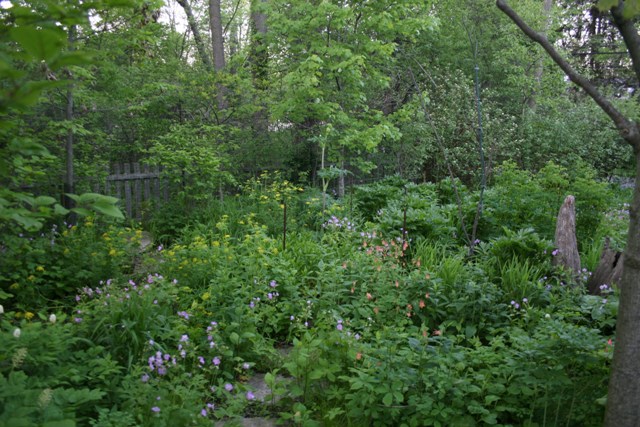EcoMyths: Catching and using rain where it falls
By Kate Sackman

EcoMyths: Catching and using rain where it falls
By Kate Sackman
About a decade ago, I started to notice that rain storms felt more violent, as if mandated by some mythical storm troll who controlled the skies. Weather had changed, yes, but not because of imaginary attackers, in spite of my paranoid delusions. In fact, extreme precipitation is a predicted consequence of the cumulative effects of climate change; these events are often accompanied by flooding. According to a recent report by the Natural Resources Defense Council and the Rocky Mountain Climate Organization, since the start of the new millennium, the Midwest region has endured seven of the top nine years of the most extreme storms. Many of these extreme storms (like in summer 2011) washed-out roads and flooded basements, and caused days-long power outages.
The misconception
We tend to think that it’s the responsibility of local governments to deal with stormwater when it rains; individual efforts can’t make an impact.
The facts
The first line of defense is the property owner: Rainwater first falls onto someone’s property, then the municipality, then our public waterways. Individuals can reduce storm water flooding and make a big difference — by storing, slowing, or filtering rainwater. The cumulative efforts of whole communities has significant impact on the quantity and quality of stormwater that ends up in our lakes and rivers.
Who ya gonna call?
So who is responsible for collecting this water and preventing flooding? Many municipal governments and water agencies have great infrastructure to channelize and collect water. In the Chicago area, storm rainwater runs down streets and into storm sewers. This fresh water is then channeled into pipes collecting sewage from the region, but these sewage pipes often lack enough capacity to store the additional water. So the combined rainwater/sewage overflow goes into Lake Michigan, our source of drinking water. In the suburbs, stormwater systems aren’t “officially” connected to municipal sewage treatment, but many storm drains are nevertheless connected mistakenly (or illegally) to the sewer systems. The result is combined sewage overflow into the lake, just as in Chicago.
That’s right — untreated sewage flows into our drinking water when stormwater overflow pours into Lake Michigan.
Green infrastructure is the flip side of the coin
What’s a person to do? Can one person make an impact? You bet! The City of Chicago encourages residents to get in on the act and implement “green infrastructure” to supplement the “built” infrastructure provided by the city. Creating green infrastructure means devising natural solutions. Then, plants and soil can absorb rainwater to prevent runoff, “capturing the rain where it falls.”
Solving the flooding problem requires everyone to do their part. You can do this in many ways: disconnect your downspouts from city sewers; install permeable pavers on sidewalks and driveways; build a rain garden with deep-rooted plants; and, install rain barrels. A city pamphlet is available for Managing Stormwater at Home, along with a longer brochure with detailed how-to instructions called Guide to Stormwater Best Management Practices. This includes installing green roofs, drainage swales, and natural landscaping.
As you can see in the photo above, Chicago walks the walk — one of the most acclaimed green roofs in the nation was installed on top of City Hall in 2001. It’s still a source of inspiration today. According to the Department of Tourism, as of 2010, over 350 designed and built green roofs make Chicago the American city with the most square feet of green roofs.
Asking the experts
For our regular EcoMyths segment, Jerome McDonnell (rain gardener extraordinaire) helped me hash out these issues with two landscape experts:
Julie Siegel is owner of the Evanston-based J. Siegel Designs. She also does sustainability work in Guatemala. Siegel believes we must make a collective commitment to changing behavior and valuing our great resource — Lake Michigan. This paradigm shift is part of the big picture in improving water management.

We also spoke with Cliff Miller, owner of P. Clifford Miller Landscape Artistry. He finds that people think rain barrels are more complicated than they are, or not worth the small amount of work required to install them. He also discovered that people worry about things like mosquitoes or algae bulid-up. Miller stresses that rainwater is better for plants than chemically treated tap water.
Sweet dreams
It’s a good feeling to know that my neighbors and I can reduce flooding from these more extreme storms. You have so much more ability to make a difference to our environment than you may realize. Our efforts will cause ripples. Capturing rain where it falls is a great place to start. Learn more about water conservation at the EcoMyths Alliance website.
